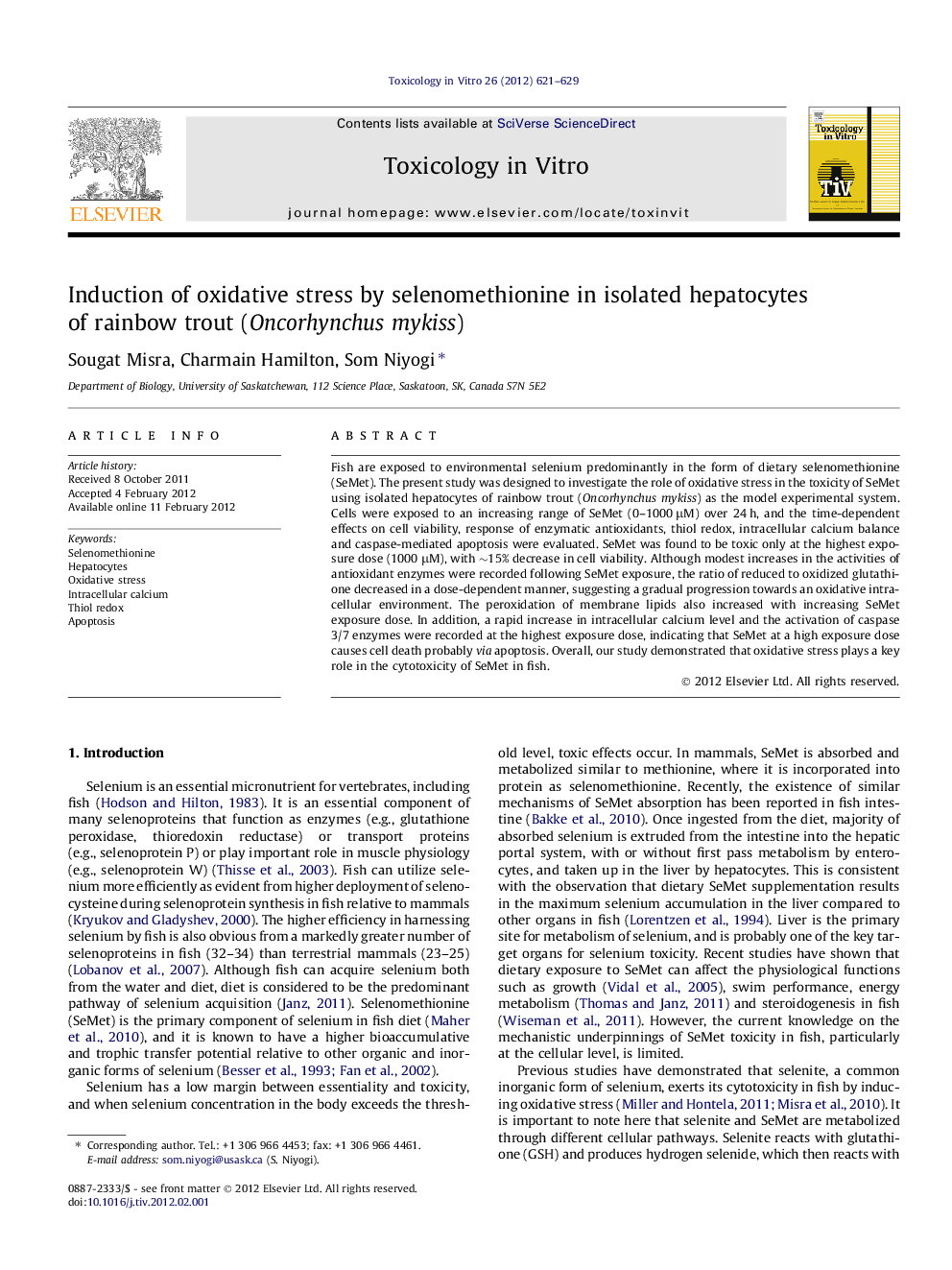| Article ID | Journal | Published Year | Pages | File Type |
|---|---|---|---|---|
| 5862972 | Toxicology in Vitro | 2012 | 9 Pages |
Fish are exposed to environmental selenium predominantly in the form of dietary selenomethionine (SeMet). The present study was designed to investigate the role of oxidative stress in the toxicity of SeMet using isolated hepatocytes of rainbow trout (Oncorhynchus mykiss) as the model experimental system. Cells were exposed to an increasing range of SeMet (0-1000 μM) over 24 h, and the time-dependent effects on cell viability, response of enzymatic antioxidants, thiol redox, intracellular calcium balance and caspase-mediated apoptosis were evaluated. SeMet was found to be toxic only at the highest exposure dose (1000 μM), with â¼15% decrease in cell viability. Although modest increases in the activities of antioxidant enzymes were recorded following SeMet exposure, the ratio of reduced to oxidized glutathione decreased in a dose-dependent manner, suggesting a gradual progression towards an oxidative intracellular environment. The peroxidation of membrane lipids also increased with increasing SeMet exposure dose. In addition, a rapid increase in intracellular calcium level and the activation of caspase 3/7 enzymes were recorded at the highest exposure dose, indicating that SeMet at a high exposure dose causes cell death probably via apoptosis. Overall, our study demonstrated that oxidative stress plays a key role in the cytotoxicity of SeMet in fish.
⺠l-selenomethionine reduced viability of rainbow trout hepatocytes at 1000 μM dose. ⺠Selenomethionine exposure led to a dose-dependent loss of cellular thiol redox. ⺠Selenomethionine exposure caused a sharp increase in membrane lipid peroxidation. ⺠High selenomethionine exposure produced a rapid increase of intracellular calcium. ⺠High selenomethionine exposure triggered cell death via apoptosis.
